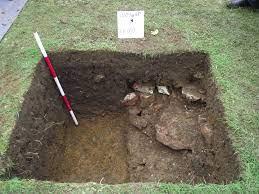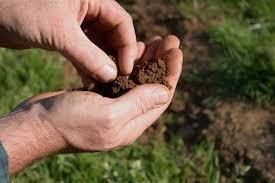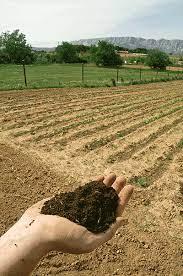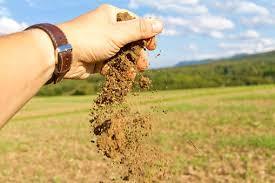Science behind Vastu | Site Soil | Soil Tests
Vastu advocates construction on land with a high soil density. Modern engineering also prefers land with a high soil density and undertakes soil testing for assessing the strength and suitability of soil. It is beyond doubt that our ancestors were aware of every aspect of building construction. They were aware of not only the modern principles of architecture but also the subtle cosmic energies that radiate in and around a human being.
According to Vastu Shastra, the quality of the soil should be checked before buying the land, because good quality soil can support the building structure well and prevent water seepage into the foundation of the building. Many different methods were evolved to do so. Some of them are based on the logic while the others are based on the casteism. We do not promote casteism, but the methods prevalent in that era are worth mentioning.
How can we check the suitability of the soil for construction?
According to King Bhoj, the ancient Indian Vastu Specialist, there are two simple tests to test the soil type.

1. Filling a pit with water: Dig a 2'x2'x2' hole and fill it with water. If the time taken to absorb the water is more than an hour, it is good. After the water is absorbed, if there are many cracks in the hole, then it is not good.
The Logic Reasoning- If the water is absorbed readily, then the soil is too loose (sandy) and not firm enough to support the foundation. If there are cracks, it indicates clayey soil, which will retain water and hence, can cause dampness to the foundation. Sites with sandy or clayey soils will require extra strong foundations with proper water proofing, which in turn will be more expensive.
2. Refilling a pit with soil: Dig another 2x2x2' hole and then fill it up again. If some soil is left over after filling, the land is good. If there is no soil left after filling up, it is average. If the hole is not fully filled, it is not good.
The Logic Reasoning- This is the test to determine the soil's natural moisture, density and aeration. If the hole is not fully filled up, it means the soil is dense and clayey and hence will retain water, which is not good for a building foundation.
Guidelines of Vastu for Soil Testing
Soil testing is an important procedure that is performed prior to the construction of the buildings by a Vastu consultant (this is not the soil testing done by geologists). These tests are performed mainly to assess the physical properties and positive or negative energies in a particular land. Here are some important guidelines of Vastu for soil that need to be followed during soil testing.
Vastu Methods for Soil Testing – there are six methods for soil testing mentioned in our ancient Vastu scriptures.
1. Density Test - Before commencing Vastu soil testing, clean the surface. Then dig a wide pit on the ground that should be of one hand length, one hand width, and one hand depth. Excavate all the soil and create a pit. Now fill back the hollow pit using the same excavated soil.

The Logic Reasoning- If even after filling the pit completely some soil remains, then the land is considered to be the best for construction of a house or building. If no soil remains after filling the pit, such land is said to be of the medium standard, according to Vastu. If, after filling the pit, no soil remains, and the pit is still not completely filled, then such land is considered to be of very low quality and is not fit for any type of construction.
The main purpose of this test is to find the consistency of the soil.
The superior soil quality ensures that the soil is firm and best suited for the construction of a building. The inferior one, on the other hand, will be quite loose and porous in consistency. Building houses on such land should be strictly avoided.
 2. Moisture Test - The moisture test is performed to assess the amount of water content in the soil. Ample amount of water inside the soil is a symbol of prosperity. Dig a hollow pit of one hand length, width, and depth and fill it with water.
2. Moisture Test - The moisture test is performed to assess the amount of water content in the soil. Ample amount of water inside the soil is a symbol of prosperity. Dig a hollow pit of one hand length, width, and depth and fill it with water.
The Logic Reasoning - After some time-
If the water level remains the same, then it is considered the best soil for house construction.
If there is some reduction in the water level, then the soil or that piece of land is considered to be of the medium quality. In such cases, one might have to face a water shortage in the future.
And if very little or no water is left in the pit it is considered to be a land of very inferior quality and is not suitable for any type of construction. Such type of land is very dry and there is no water or moisture in the soil.
3. Radiation Test - Dig a pit and keep four earthen lamps facing four cardinal directions. Light the lamps using oil/ghee and cotton wicks. Now observe the lamps.
The Logic Reasoning - Let us then see which lamp burns for the longest time?
If the lamp on the East burns for the longest time, then it is best suited for Brahmins.
Similarly, lamps in the West, South, and North indicate their auspiciousness towards Vaishyas, Kshatriyas, and Shudras respectively, says the Vastu Shastra.
Although some tests are not done now (but are mentioned in our ancient documents) as we don’t encourage castism or differences among people based on caste, creed, race, gender, etc. and nor do shastras. It is said that in earlier days of human evolution, people were divided into different castes based on their line of work and not by birth. People who did the spiritual sadhana and religious chores were considered Brahmins, people who fought in wars were considered Kshatriyas and so on. Then again, there is no accurate evidence to prove any of this.
 4. Color Radiation Test - For this test, we take four coloured flower buds. These should be white, red, yellow and black. Place them on the soil with the black one in the North, yellow in the West, red in South and white in the East direction. This should be done in the evening. Later, return the next morning and observe the flowers. Depending on the flower that blooms, you can make the following conclusions.
4. Color Radiation Test - For this test, we take four coloured flower buds. These should be white, red, yellow and black. Place them on the soil with the black one in the North, yellow in the West, red in South and white in the East direction. This should be done in the evening. Later, return the next morning and observe the flowers. Depending on the flower that blooms, you can make the following conclusions.
- If the white flower blossoms, then the land is good for Brahmins.
- If the yellow one blooms it is good for Vaishyas.
- The red one for Kshatriyas and the black one is for Shudras. Although I do not have any logical reasoning that I can think of, but is worth mentioning as this has been described in our ancient scriptures where caste is the major criteria.
 5.Fertility Test - If the land is fertile, that indicates prosperity for the people residing in that place. Green vegetative land indicates progress and wealth. In this test, one needs to sow seeds of wheat, bean, paddy, etc.
5.Fertility Test - If the land is fertile, that indicates prosperity for the people residing in that place. Green vegetative land indicates progress and wealth. In this test, one needs to sow seeds of wheat, bean, paddy, etc.
- If the seeds sprout within 3 nights, then the land is fertile and is very good for the residential purpose.
- If the seeds sprout in 5 days, the land belongs to the medium category. It also can be used for living.
- But if the sprouting takes more than 7 days, then the land is considered unfit for building a house.
This technique was especially valid during earlier days, when farming was an integral part of our lives, especially in India. This test may not be required in the 21st century.
 6. Wind Test - This is done to test the flow of wind or air in the circumference of land. Take a small amount of soil into your hands and release it slowly from a moderate height. If it falls instantly, the land is considered unfit for living. If soil particles float in the air, then the land is considered good for house construction.
6. Wind Test - This is done to test the flow of wind or air in the circumference of land. Take a small amount of soil into your hands and release it slowly from a moderate height. If it falls instantly, the land is considered unfit for living. If soil particles float in the air, then the land is considered good for house construction.
Surprisingly, even today, we adopt the same methods for testing the soil at a site. In fact, it is the first thing an architect instructs the Client to get done, so that the kind of structure can be decided, and the structural engineer can design the structure and foundation accordingly. Hence, we have understood the importance of soil testing for the selection of site.
 I am an Architect, Interior Designer and a Vastu Consultant, with more than a decade of experience in conceptualization, designing and construction of diverse architectural projects. An alumnus of IIT-Roorkee, I have a thorough background in architecture and interior designing with expertise in directing all project phases. My passion towards architecture inspires me to keep learning about various new trends yet following the age-old traditions.
I am an Architect, Interior Designer and a Vastu Consultant, with more than a decade of experience in conceptualization, designing and construction of diverse architectural projects. An alumnus of IIT-Roorkee, I have a thorough background in architecture and interior designing with expertise in directing all project phases. My passion towards architecture inspires me to keep learning about various new trends yet following the age-old traditions.
NEXT ARTICLE